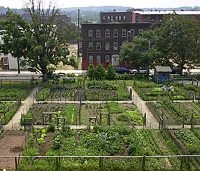The website at http://www.whitehousefarmer.com says: Why Do We Need a White House Farmer? Because everyone, from your family and friends to our First Family and their guests, needs to know who grew their food and how it was grown. This site was launched in November 2008 as a forum to follow up on Michael Pollan's call for a White House Farmer. Pollan suggested the farmer be charged with transforming 'five prime south-facing acres of the White House lawn and plant[ing] in their place an organic fruit and vegetable garden' whose produce will be used by the White House Chef, and given to area food banks.
Blog Post
Growing Greener



Published February 3, 2009 Permalink Citation
(2009, February 3). Growing Greener. Retrieved from https://www.buildinggreen.com/blog/growing-greener
Comments
Thanks for posting this great
Thanks for posting this great article which speaks to the new eco agricultural revolution and how integrated design necessarily includes the local food system. The American Planning Association recognized this when they adopted a policy that encourages its members, 65 percent of whom work for state and local government agencies, to help build “stronger, sustainable and more self-reliant” local food systems.
Readers should be aware of the new Green Guide for Healthcare Food Service credits, a component of the new Green Guide for Healthcare Operations credits. These are the first and only comprehensive food service metrics available in the marketplace (as far as we know!). The healthcare community which we represent is extremely excited about this guidance with several systems using the credits to develop benchmarks.
For those interested, the credits are available at www.gghc.org for free download or in the resource section at www.healthyfoodinhealthcare.org.
FoodMed 09 The Third International Conference on Local, Sustainable Healthcare Food (www.foodmed.org) will feature presentations on the GGHC food credits, with case studies and examples.
Jamie Harvie



Add new comment
To post a comment, you need to register for a BuildingGreen Basic membership (free) or login to your existing profile.